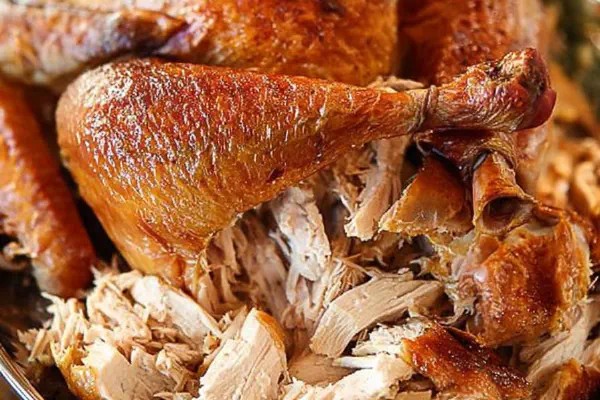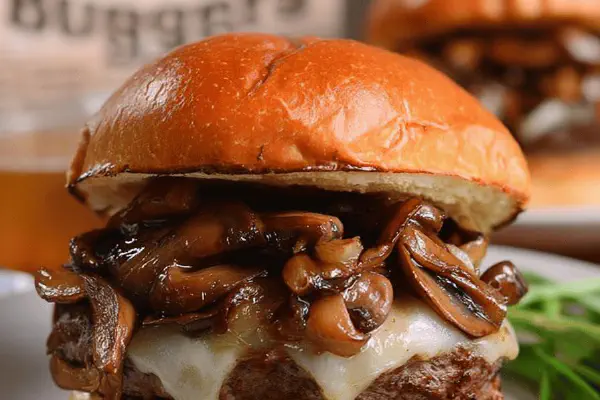Spatchcocked Juicy Turkey

By Emma
Certified Culinary Professional
Ingredients
- 1 whole turkey about 12 to 14 pounds
- 4 cups coarsely chopped mixed root vegetables (carrots, celery, onions)
- 1/4 cup olive oil
- 1 tablespoon smoked paprika
- 2 teaspoons kosher salt
- 1 teaspoon freshly ground black pepper
- nonstick cooking spray
- foil for lining pan
About the ingredients
Method
Preparing the roasting base
- Line a rimmed baking sheet with aluminum foil, spray lightly with nonstick spray. Throw on your rough chopped veggies—don’t fuss, keep them chunky. I usually grab carrots, celery, and onions for that earthy aroma, but a parsnip or two wouldn’t hurt. This acts as a natural roasting rack, prevents hot pan spots, and adds flavor notes.
Breaking down the bird
- Flip the turkey breast-side down on a big cutting board. Pat dry—moist skin means less grip and mess. Grab your poultry shears; if yours aren’t sharp enough, apply some muscle, but take care. The backbone’s a pain, cut along each side from tail to neck—some bones stubborn, use both hands on the shears. Using a knife’s an option but riskier—took me years to trust shears over knives here. You can save the backbone for a quick stock or toss it. Then flip bird over breast-up, hands flat and center of breast, press down hard. Press until you hear a couple snaps—this flattens for even heat penetration. Don’t be shy—flatter’s better.
Seasoning and prepping
- Mix oil, smoked paprika (swap from poultry seasoning for a punchy twist I prefer), salt, and pepper in a medium bowl. Dry the turkey again—especially inside now exposed. Brush liberally; don’t be shy. Rub some under breast skin if you manage. That extra rub really brings flavor in but be gentle to avoid tearing skin. Tuck wing tips underneath chicken so they don’t burn or dry out—small flashpoint in ovens.
Cooking process
- Oven up to 450°F, allow turkey to rest 20 minutes on the counter while it heats. That little rest makes juices happy. Slide the bird on top of veggies, smooth side down. Cook 60 to 75 minutes; halfway turn pan for even exposure. Look for bubbling juices and the skin crisps up with deep golden brown. Check thick part of thigh for 165°F with a meat thermometer—you want that resistance and clear juices. Breast usually reads about 155°F then. Residual heat finishes breast as it rests. If skin edges start too dark, tent foil. Ovens vary wildly so watch not just clock. Juicy and cooked, not dried.
Rest and serve
- Once out, rest for 15 to 20 minutes uncovered. Juices redistribute—cut too soon and they’ll run right out, dry carcass later. Carve usual way after. The veggies underneath soak up drippings, good quick side or base for gravy if you’re feeling fancy.
Cooking tips
Chef's notes
- 💡 Backbone removal is a workout. Use strong poultry shears, both hands steady. Snap sounds tell you when it flattens right. Don’t rush. Skin must stay mostly intact to keep moisture inside. Dry turkey skin multiple times. Moisture ruins crispness.
- 💡 Use rough chopped veggies like carrots, celery, onions as a natural roasting rack. Chunky pieces allow airflow and collect drippings. Don’t fret over small sizes. Acts like flavor bombs under bird plus prevents hot spots on pan.
- 💡 Oil mix matters. Olive oil works mellow. Butter or avocado oil changes skin texture, crisp time. Swap smoked paprika if you want cumin or herbes de Provence; gives different aroma, deeper notes. Salt generously, cracked fresh pepper essential. No pre-ground powders here.
- 💡 High heat cooks fast. At 450°F look for bubbling skin edges that turn golden brown, juicy juices running clear. Halfway rotate pan for even color; ovens vary big time. Tent foil if skin edges get too dark but keep crispness sacred. Heat drives flavor and texture.
- 💡 Rest bird uncovered 15–20 minutes after roasting. Juices redistribute slow. Cut too soon and meat dries out. Veggies underneath soak drippings, tasty side or gravy base. Let temps settle; breast hits about 155°F, thighs 165°F. Residual heat finishes cooking gently.
Common questions
Why flatten turkey?
Flattens for even cook. Heat hits all parts same time. Prevents undercooked thighs and dry breast. Press hard until snaps but don't break skin. Backbone comes out, saves stock or toss.
Can I swap spices?
Yes, smoked paprika swaps out poultry seasoning here. Cumin or herbes de Provence give a different twist. Salt’s no substitute; needed generous. Pepper fresh cracked, no powders. Oil changes crisp speed; olive oil mellow, butter richer but faster browning.
What to do if wing tips burn?
Tuck underneath bird before roasting. Small tips burn easy, thin skin dries fast. If burnt, trim before serving, avoid bitter bits. Tent foil during cooking if spots darken. Rotate pan midway keeps heat even, stops hotspots.
How to store leftovers?
Wrap tight in foil or airtight container. Refrigerate up to 4 days. Reheat gently, low oven to keep skin from getting leathery. Veggies soak drippings, great warmed too. Freeze cooked turkey in chunks; thaw overnight in fridge before next use.



